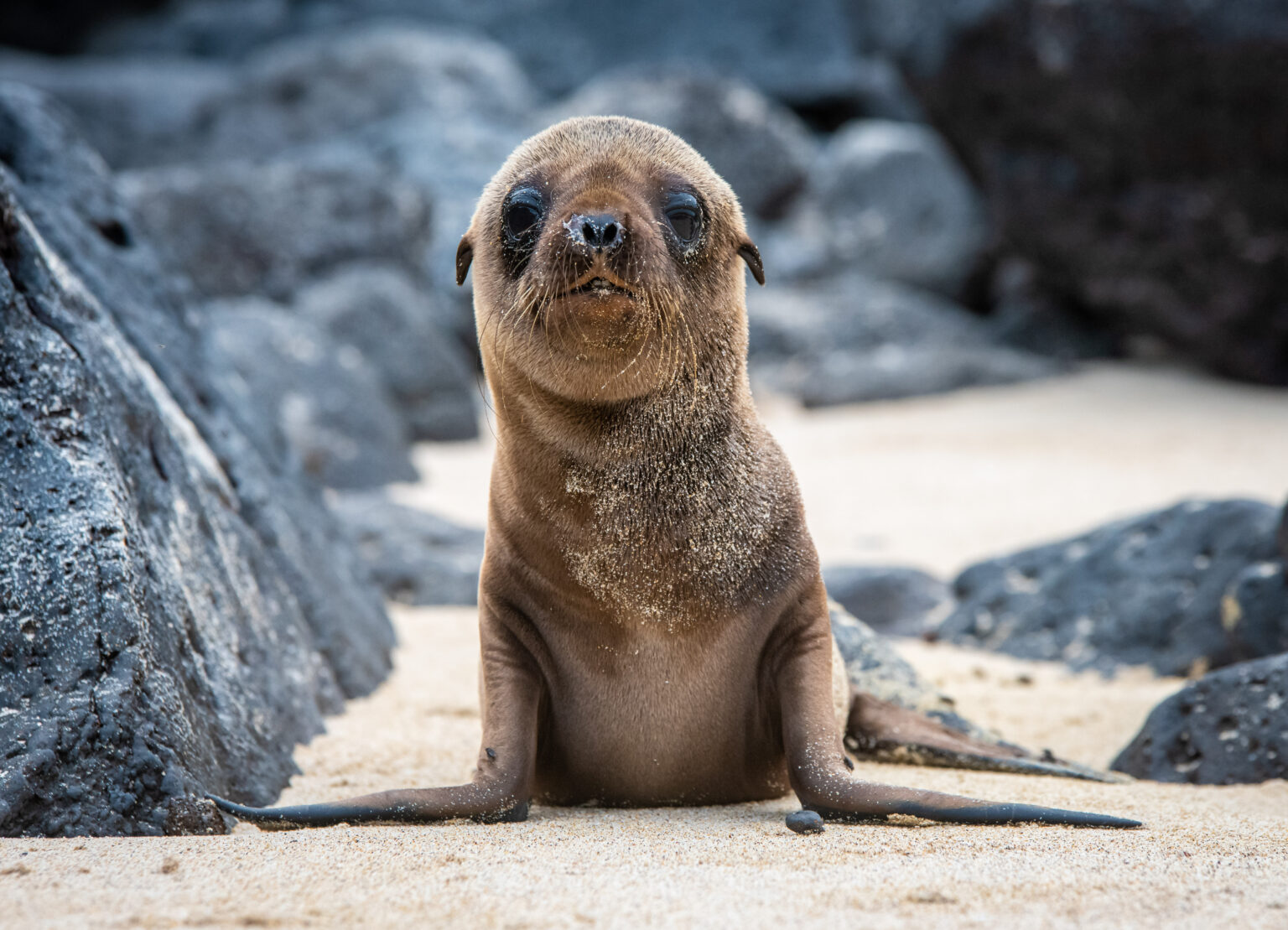
Although both the Galápagos fur seal and the Galápagos sea lion live on the same islands and look somewhat alike, they are actually different species with unique traits.
The Galapagos fur seal belongs to a genus of fur seals called Arctocephalus (or Arctophoca), meaning bear-headed. The Galapagos sea lion belongs to the genus Zalophus, which contains two extant sea lion species, and previously contained the Japanese sea lion, which went extinct in the 1970s.
Here’s a breakdown to help you tell them apart:
Basic Identity
| Feature | Galápagos Fur Seal (Arctocephalus galapagoensis) | Galápagos Sea Lion (Zalophus wollebaeki) |
|---|---|---|
| Family | Otariidae (eared seals) | Otariidae (eared seals) |
| Status | Endangered | Endangered |
| Endemic to Galápagos? | Yes | Yes |
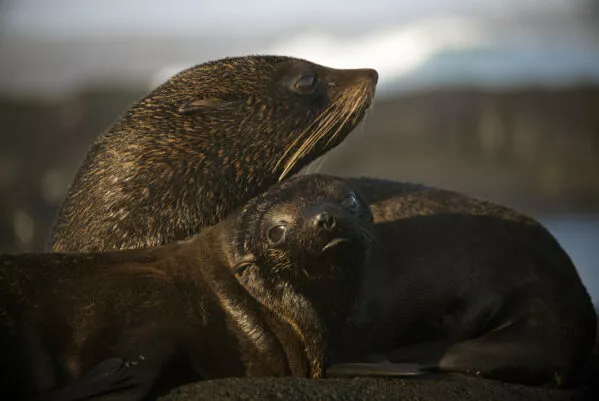
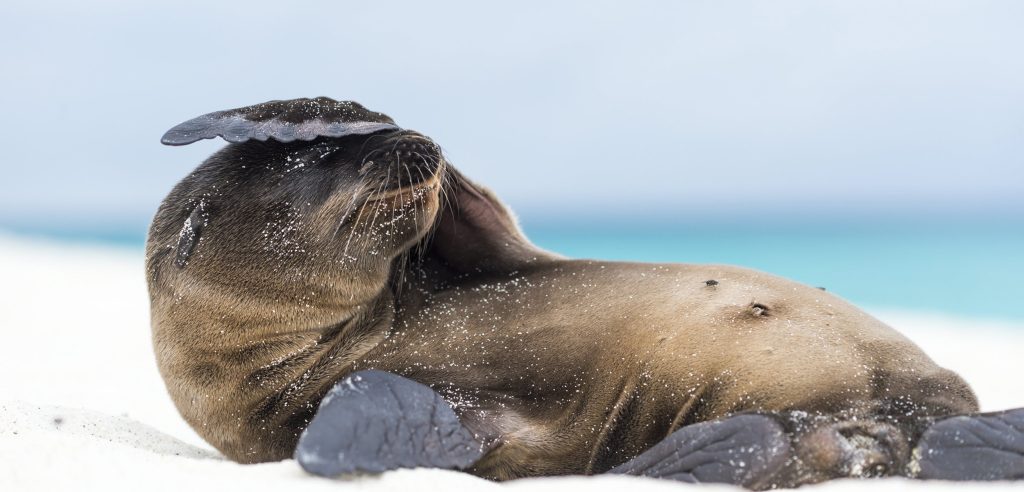
Appearance
| Feature | Fur Seal | Sea Lion |
|---|---|---|
| Size | Smaller (up to 140 lbs/64 kg) | Larger (males up to 800 lbs/363 kg) |
| Fur | Thick, dense underfur for insulation | Coarser fur, less dense |
| Ears | Visible external ears | Visible external ears |
| Nose | Shorter and flatter | Longer, dog-like snout |
| Eyes | Larger eyes (for night vision) | Smaller eyes |
| Color | Dark brown to grayish | Brown, with males darker than females |
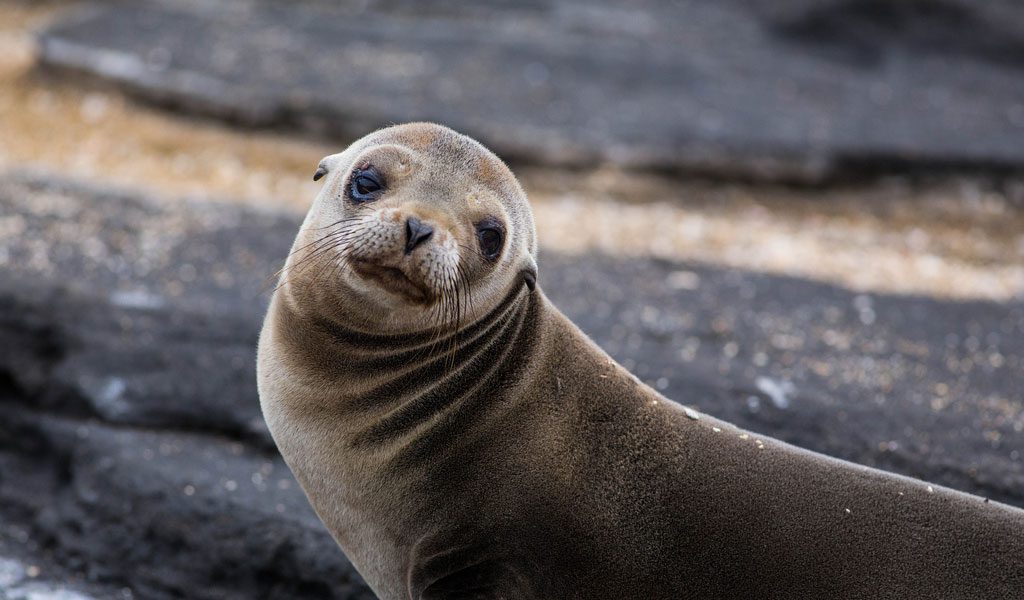
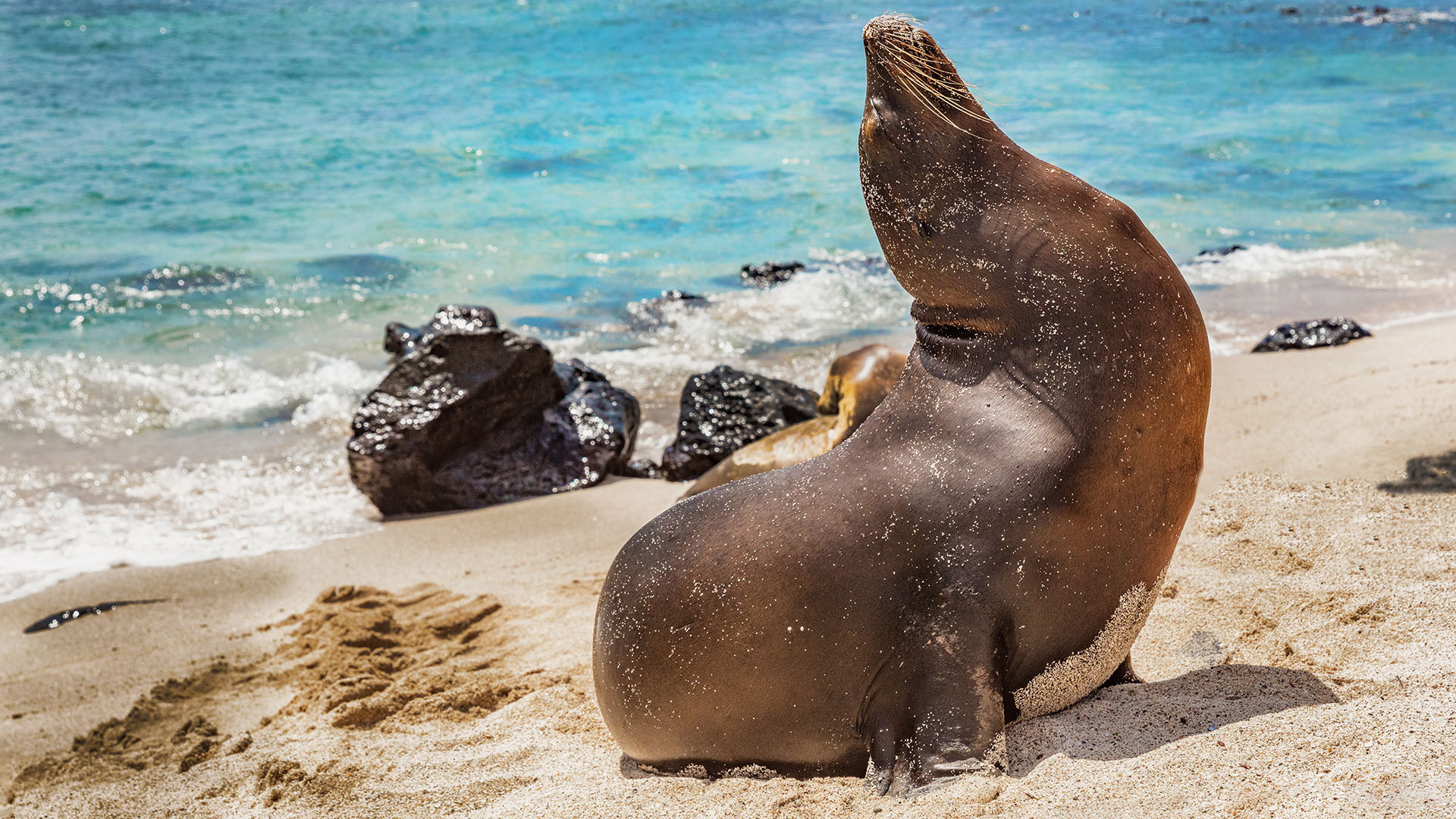
Behavior & Habitat
| Feature | Fur Seal | Sea Lion |
|---|---|---|
| Activity | Nocturnal (active at night) | Diurnal (active during the day) |
| Haul-Out Sites | Prefers shaded rocky areas, caves, cliffs | Lounges on beaches and docks |
| Social Behavior | More solitary or in smaller groups | Highly social, form large colonies |
| Movement | More awkward on land | More agile on land with powerful flippers |
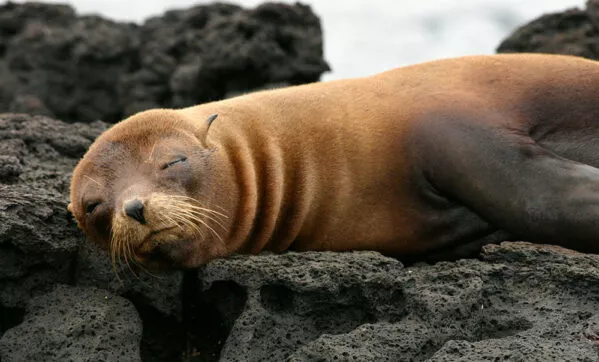
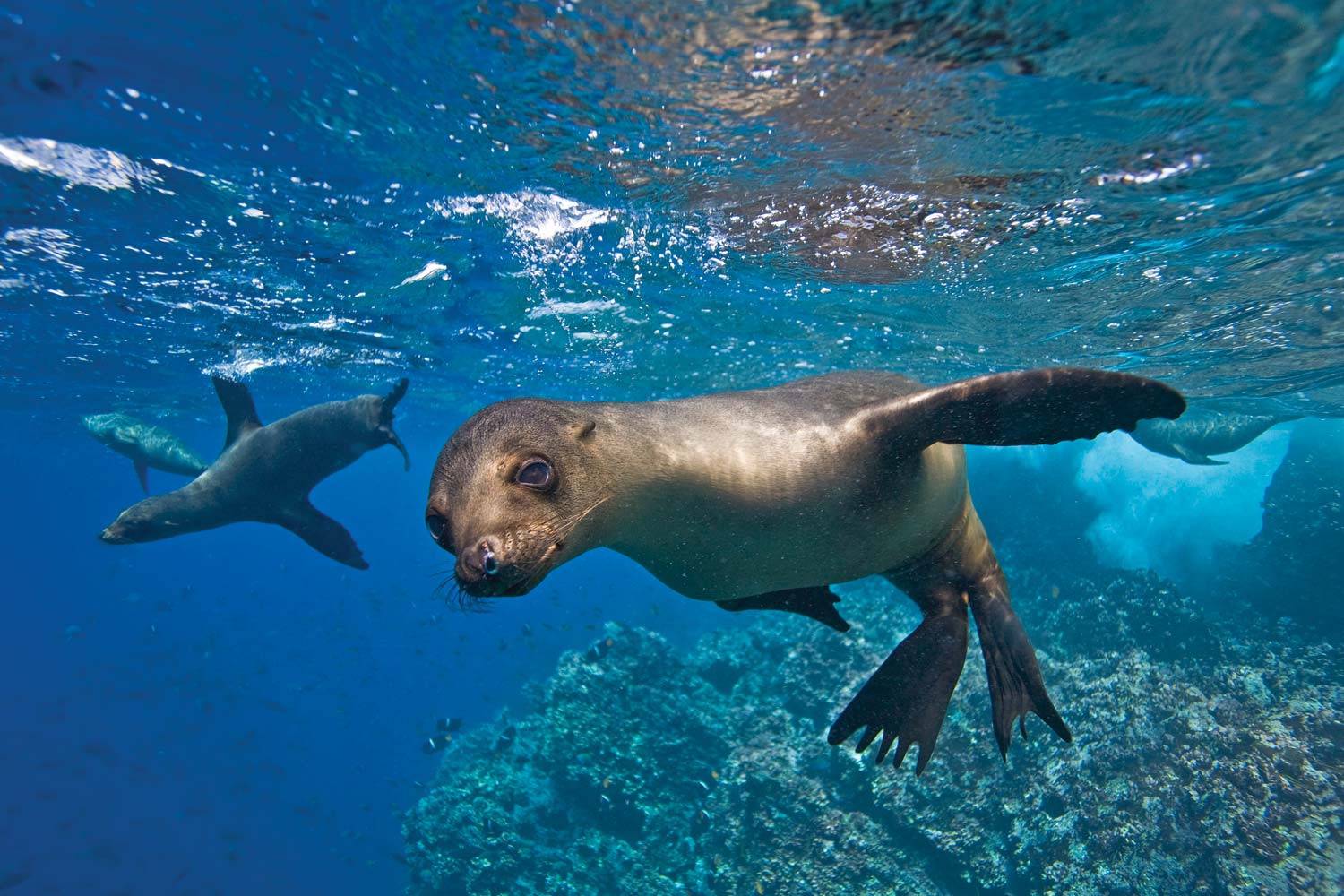
Feeding & Diet
| Feature | Fur Seal | Sea Lion |
|---|---|---|
| Diet | Mostly fish and squid | Fish, squid, octopus |
| Hunting Time | Hunts mostly at night | Hunts during the day |
Breeding
| Feature | Fur Seal | Sea Lion |
|---|---|---|
| Breeding Season | August to November | May to January |
| Pup Care | Mothers nurse pups longer (up to 2 years) | Shorter lactation period |
Fun Facts
- Galápagos Fur Seal is the smallest fur seal species in the world.
- Galápagos Sea Lions are curious and often approach snorkelers and swimmers.
- You’re more likely to see sea lions out and about—they’re noisy, bold, and often sunbathing.
- Fur seals are elusive, quiet, and prefer cooler, shaded crevices.
Summary
If you spot a sleek, loud animal basking in the sun or swimming playfully near a boat—it’s likely a Galápagos sea lion. If you see a smaller, darker creature tucked away in a shadowy rock crevice—it’s probably a Galápagos fur seal.
Despite sharing a habitat, these two species avoid competition by having different hunting times and preferences. They’re both vital parts of the Galápagos ecosystem and are protected under Ecuadorian law.
Disclaimer: This blog post is for edutainment purposes only and may not be entirely accurate.






